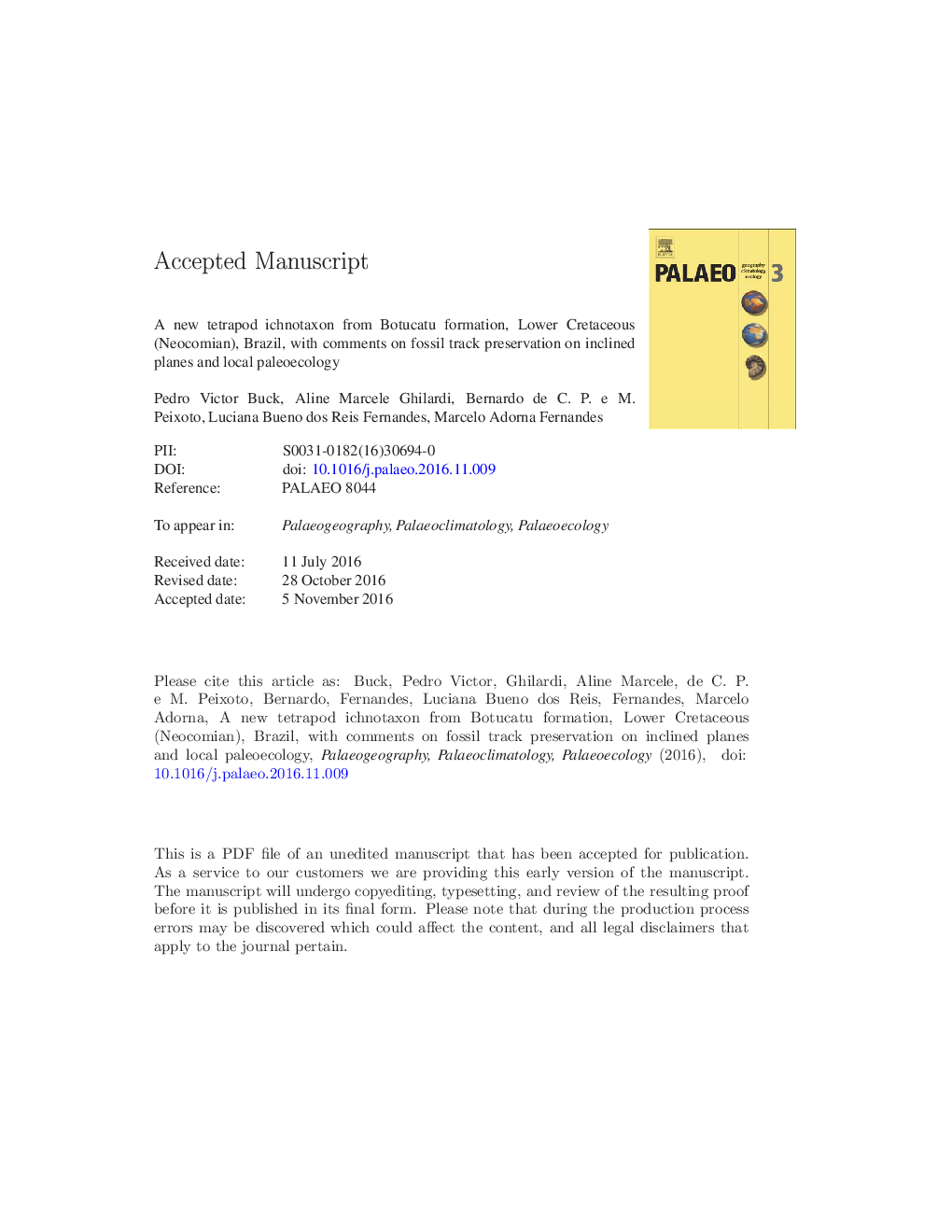| Article ID | Journal | Published Year | Pages | File Type |
|---|---|---|---|---|
| 5756017 | Palaeogeography, Palaeoclimatology, Palaeoecology | 2017 | 63 Pages |
Abstract
Botucatu Formation is a paleoerg, worldwide famous for its vertebrate and invertebrate ichnofossils. Among Botucatu Formation tetrapod tracks, ichnogenus Brasilichnium Leonardi, 1981 is well known, being generally attributed to mammaliform trackmakers. In this study a new ichnotaxon is described, Brasilichnium saltatorium isp. nov., characterized by a hopping locomotion in phases. The new ichnotaxon differs from B. elusivum Leonardi, 1981 mainly for the locomotion pattern. It also differs from other ichnotaxa by indicating hopping progression regarding limb morphology and track configuration. Fossil evidence shows B. saltatorium and B. elusivum could be produced by the same organism and represent an alternation in locomotory behavior. Neoichnological experiments were conducted to better understand track preservation and aspects of saltatorial dynamics on inclined planes. It was observed differences in heteropody degree may be related to movement direction and locomotion effort on ascending or descending the incluned plane. Due to extramorphological features, heteropody is more evident when the producer climbs the simulated dune. Also, when the movement is ascendent, lack of handprints can occur. This can be explained by total overlap of pes and manus impression and subsurface hand impression. Comparing with recent organisms living in similar environments and conditions, the Botucatu Formation B. saltatorium producer should have been a generalist organism likely with an omnivorous habit. It may have adopted hopping locomotion to gain velocity when hunting, escaping predators, or to facilitate progression on inclined planes and hot sand. São Bento quarry represents a paleodesert environment with relative high humidity, where temporary lagoons may have formed during pluvial events. Paleo-rain episode evidence is preserved through raindrops impact craters on local sandstone. São Bento quarry paleoenvironment sustained a rich paleofauna, represented by abundant ichnofossils. This local diversity suggests a punctual productive desert paleocommunity with several paleoecological interactions, where Brasilichnium producer was one of the fundamental elements.
Keywords
Related Topics
Physical Sciences and Engineering
Earth and Planetary Sciences
Earth-Surface Processes
Authors
Pedro Victor Buck, Aline Marcele Ghilardi, Bernardo de C. P. e M. Peixoto, Luciana Bueno dos Reis Fernandes, Marcelo Adorna Fernandes,
